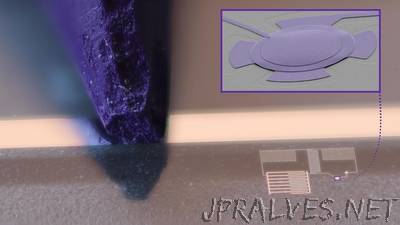
“In a recent experiment at EPFL, a microwave resonator, a circuit that supports electric signals oscillating at a resonance frequency, is coupled to the vibrations of a metallic micro-drum. By actively cooling the mechanical motion close to the lowest energy allowed by quantum mechanics, the micro-drum can be turned into a quantum reservoir – an environment that can shape the states of the microwaves. The findings are published as an advanced publication in Nature Physics. László Dániel Tóth, Nathan Bernier, and Dr Alexey Feofanov led the research effort in Tobias Kippenberg’s Laboratory of Photonics and Quantum Measurements at EPFL, with support from Dr Andreas Nunnenkamp, a theorist at the University of Cambridge, UK. Microwaves are electromagnetic waves, just like visible light, but with a frequency that is four orders of magnitude smaller. Microwaves form the backbone of several everyday technologies, from microwave ovens and cellular phones to satellite communication, and have recently gained further importance in manipulating quantum information in superconducting circuits — one of the most promising candidates to realize future quantum computers. The micro-drum, only 30 microns in diameter, 100 nanometers thick and fabricated in the Center of MicroNanotechnology (CMi) at EPFL, constitutes the top plate of a capacitor in a superconducting microwave resonator. The drum’s position modulates the resonator’s resonance frequency and, conversely, a voltage across the capacitor exerts a force on the micro-drum. Through this bidirectional interaction, energy can be exchanged between mechanical vibrations and the microwave oscillations in the superconducting circuit.”
